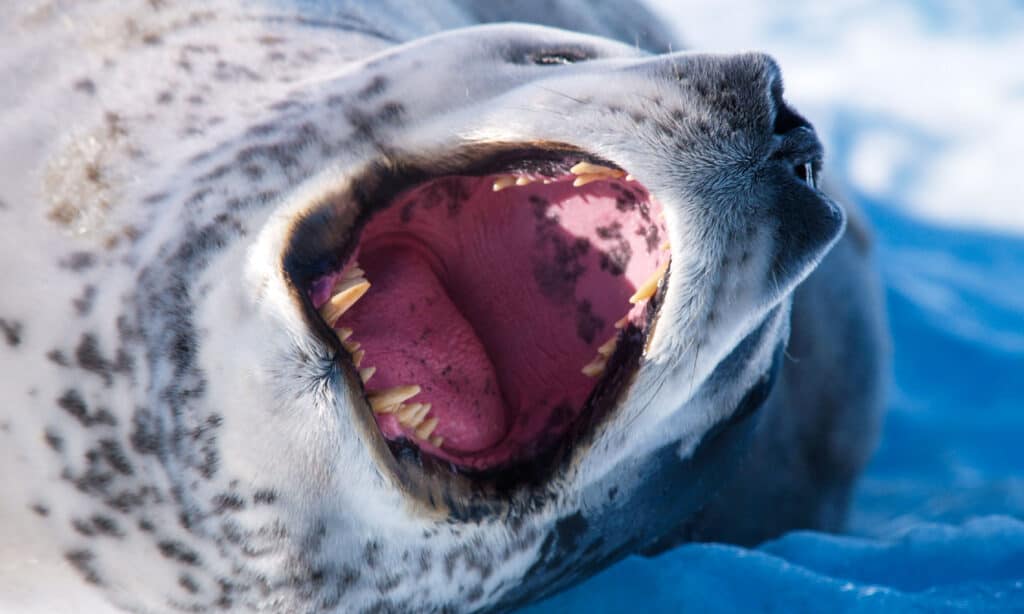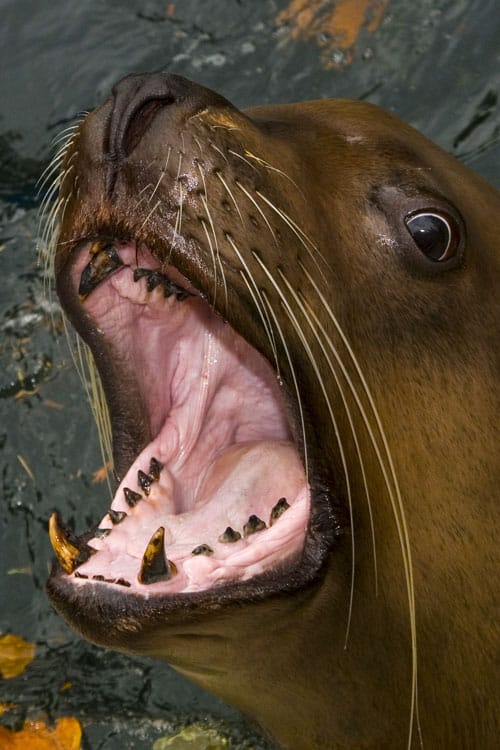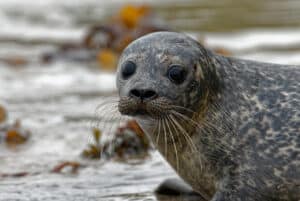The scientific name for seals is Pinnipedia, which means “fin-footed.” The group consists of three main groups: the walrus, the eared seals, including fur seals and sea lions, and the “true” seals. Seals are a widely diversified group of carnivorous, fin-footed, semiaquatic, primarily marine animals. Generally, seals are carnivorous and predatory. Their primary diet consists of fish, but they also prey on squid, octopus, lobsters, and eels. These animals can also be found on all the continents of the world, even Antarctica.
Seals can be found in various aquatic environments, including freshwater lakes and rivers, open oceans, coastal water, and brackish water. Although a large number of these animals like to inhabit aquatic habitats, they are generally amphibians. Like most mammals, seals give birth to their young alive. Mothers take their time feeding their children until they are old enough to forage on their own. Once they are grown, their dentition begins to form more and resembles that of most mammals. Here, we will learn just what makes a seal’s teeth unique and what they use them for.
Do Newly Born Seals Have Teeth?

Seals are born with teeth.
©iStock.com/by-studio
Although seals are mammals, there are still a few differences between them and other types of mammals. Unlike most mammals, seals are born with teeth. In other words, newly born seals have teeth just like adult seals. However, their teeth are not as many or as developed as those of adults. Although their teeth might be underdeveloped, baby seals can still leave painful bite marks on people.
Like other mammals, baby seals are fed milk from their mothers until they are old enough to forage for themselves. Unlike other mammals, the milk seals give their pups contain little to no lactose. Instead, it contains up to 60% fat, allowing the young to grow quickly. When pups are born, their mothers prefer taking them to land to nurse them, even though most are born precocial and can swim.
How Do Seals Teeth Work?

Seals have at most 38 teeth.
©Yvonne Schonewille/Shutterstock.com
Just like humans and most mammals, seals have teeth. Most seals have between 34 to 38 teeth, while some have a few less than 34 but nothing more than 38. Most seals have really sharp and pointed front teeth. Despite this fact, they do not use their front teeth for chewing. They focus on using the front teeth for grasping and tearing their food. They use the teeth at the back of their mouth to chew their food and break shells and other crustaceans. Let’s look at each set of teeth you can find in a seal’s mouth!
Canine
Most seals have sharp canines that can pierce through their prey’s bodies, and although they mostly use their back molars to crush their prey, not all seals have this ability. Some species like the leopard seal use their cheek teeth differently. Instead of using their front teeth to capture kill, they use their oddly shaped cheek teeth. Other species of seals like the Weddell seals have four canines, two on top and two on the bottom. Like most carnivores, seals use their canine to quickly grab prey and firmly hold it. Their canine teeth are long, sharp, and very pointed.
Incisors
Seals also have four incisors, two at the top and two at the bottom. Over the years, their incisors have evolved to fit each species, their habitat choice, and their dietary choices. For instance, Weddell seals live further south than any other seal and they have four incisors like most seals between their canines. The reason Weddell seals have different teeth from other seals is that they live further in colder areas than any other seals, so their teeth have evolved to help them survive.
In other words, their teeth have adapted to help them breathe better on the ice. Their canines and incisors are specifically modified to stick out, allowing them to ream or break through the ice in order to create and maintain breathing holes, which helps them to survive beneath the ice shelf. These seals have very wide jaws that make it easy for them to grab onto ice rims or catch their prey. Just like the human jaw, the top part of their jaw is stationary while the lower part moves up and down.
Post Canine or Back Teeth
Some species of seals have back teeth, otherwise called post canines. These seals have short, oval bases that culminate at rounded points on their post-canine teeth. However, most species of seals with post-canine teeth are known to swallow their food whole. As such, they do not use these post-canine teeth to grind food. Instead, they use these teeth to help them push their food down their throats.
Generally, seals have very sharp teeth. Even the molars on seals are razor-sharp. They don’t chew their food like we do which is why their molars aren’t flat. They can grab and rip apart fish that are too large to be swallowed whole using those pointed teeth.
Do Sea Lions Teeth Need to be Brushed?

Helping sea lions wash and clean their mouths is essential.
©iStock.com/Lingbeek
Like people, seals are susceptible to gum infections, plaque buildup, and tooth decay, so brushing and cleaning a seal’s teeth is important for its health. Helping sea lions wash and clean their mouths is essential because they are unable to do so with their tongues and teeth.
Over the years, zoo keepers and people in charge of animal shelters have learned to educate all of the harbor seals and the majority of the fur seals to let us brush their teeth since seals may have gum disease and plaque buildup much like people. These individuals who are in charge of maintaining the seals’ oral health must adhere to this essential husbandry technique every day.
Up Next:
Leopard Seal Teeth: Everything You Need to Know
Sea Lion Teeth: Everything You Need to Know
The photo featured at the top of this post is © iStock.com/serengeti130
Sources
- Seaworld Parks and Entertainment, Available here: https://seaworld.org/animals/all-about/harbor-seal/characteristics/
- Ocean Today, Available here: https://oceantoday.noaa.gov/sealanatomy/
- New England Aquarium, Available here: http://trainers.neaq.org/2008/06/say-ahhhhh.php
Thank you for reading! Have some feedback for us? Contact the AZ Animals editorial team.






